Armament and Ammunition
Firearms and Training Weapons - Definitions and Classifications
Existem muitas definições para armas de fogo. Dentre elas podemos escolher a que define que armas de fogo são dispositivos capazes de lançar, a grande distância e com grande energia, carga projetil, em sua maioria metálica, com a finalidade de atingir um determinado alvo, seja para imobilizá-lo ou destruí-lo. O lançamento se dá por meio da rápida expansion of the gas produced by the exothermic combustion of the chemical propellant, after its deflagration. If the pressurization of the gas is achieved through mechanical compression of the gas, and not through chemical combustion of the propellant, the weaponry is technically a compressed air weapon and not a firearm.
The first primitive firearms originated in 10th century China, when bamboo tubes containing gunpowder charges were used to launch metallic balls. Such devices are said to have been employed to good effect at the siege of De'na in 1132. In the 13th century, the Chinese introduced the metal barrel and created a kind of hand cannon, considered by many to be the ancestor of all firearms. The technology gradually spread to the rest of East and South Asia, the Middle East and Europe. Older firearms used to use black powder as a propellant; modern ones employ smokeless gunpowder or other more recently developed propellants. Most modern firearms, with the exception of smoothbore shotguns, have rifled barrels in order to give the projectile a rotational movement about its longitudinal and displacement axis, ensuring greater stability during its travel to the target.
Modern firearms can be classified by the caliber of the projectile, that is, by the internal diameter of the launching barrel, measured in millimeters or inches, e.g.: 7.65mm, 0.357in. The caliber may also be defined by standard sizes, e.g., 12ga caliber rifles. They may also be classified by the type of action employed to provide the necessary load for projectile launch, e.g. muzzleloader, breechloader, lever action, etc. They can also be classified by the rate of fire: repeating, semi-automatic, automatic. Other classifications may refer to the type of barrel used (rifled or smoothbore) and the length of the barrel (24 inches), the firing mechanism (matchlock, wheellock, flintlock, lock percussion), the main intended use of the design (hunting rifle) or the commonly accepted name for a specific variation (Gatling gun).
To make them work, shooters aim their firearms at their targets, seeking an alignment between the barrel extension and the desired target, and fire the firing pin that will set off the cartridge that will propel the projectile. This, in turn, will be projected and will follow the direction of the barrel extension through which it will pass before leaving the gun. However, due to gravity, the projectile ends up deviating its trajectory downward, the greater the distance to the target, requiring some form of compensation so that the target can be correctly hit at greater distances. The accurate range of pistols generally does not exceed 110 yards (100 m), while most rifles, because they have longer barrels and give the projectile more rotation, are accurate to 550 yards (500 m). Precision rifles are built to be more accurate, allowing a useful range of more than 2,200 yards (2,000 m). Over time, more elaborate precision systems were developed that compensated for the deflection of the projectile with gravity to allow for proper aiming at great distances.
In 2018, the Small Arms Survey reported that there were over one billion small arms distributed globally, of which 857 million (about 85%) were in civilian hands. US civilians alone hold 393 million, about 46% of the world's total firearms. This equates to about 120 firearms for every 100 residents. The world's armed forces control something like 133 million, about 13% of the global small arms total, of which more than 43% belong to two countries: the Russian Federation (30.3 million) and China (27.5 million). Police agencies control about 2 percent (23 million) of the global small arms total.
Short Weapons
The smallest and most common firearms are revolvers and semi-automatic pistols. Revolvers have multiple firing chambers or "loading holes" in a revolving cylinder. Each chamber in the cylinder is loaded with a single cartridge. Semi-automatic pistols have a single, fixed, machined firing chamber in the rear of the barrel and a magazine that loads this chamber as the previous cartridge is ejected. With each press of the trigger, a cartridge is fired. The expansion energy of the cartridge's own gases is used to expel the empty cartridge after the projectile is fired and to activate the entire mechanism that allows a new loaded cartridge to enter, leaving the gun ready to fire a new round. Double-action revolvers rotate the drum with the cartridges, after the shot is fired, by means of the mechanical energy provided by the shooter when pulling the trigger.
With the invention of the barrel revolver in 1818, firearms, once limited to one or two rounds, became capable of multiple firing and became popular. Automatic loading pistol designs began to appear in the early 1870s, and by the end of World War I, pistols had largely supplanted revolvers in military applications. By the end of the 20th century, most handguns regularly carried by military, police, and civilians were semi-automatic, although revolvers were still widely used. Generally speaking, military and police forces use semi-automatic handguns because of their high ammunition capacity and ability to reload quickly by simply removing the empty magazine and inserting a new, fully loaded one in a few seconds.
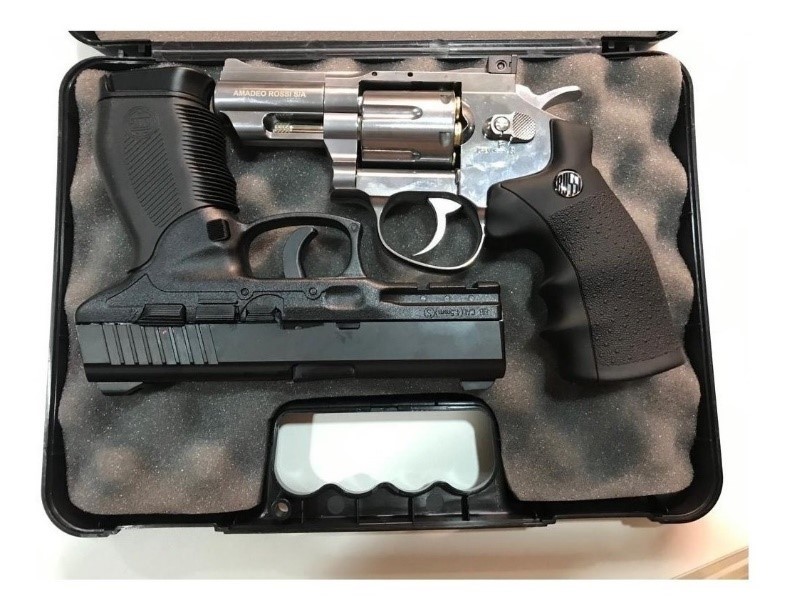
. Today, revolvers are more common among hunters because their cartridges are generally more powerful than those of semi-automatic pistols of similar caliber. Also because revolvers are stronger, more durable, and simpler to operate and maintain, making them suitable for outdoor use in more rustic environments. Revolvers, especially in the calibers .22 LR, .38 Special, and 357 Magnum, are much appreciated for their small size, for being able to be carried concealed, when the law allows it, and for their reliability. They can be used in self-defense, hunting, target shooting, competitions, etc.).
Long Weapons
A long gun is generally a firearm whose overall length is greater than that of a pistol. They are designed to be held and fired with both hands or with support from the hip or shoulder. Long guns usually have a barrel between 10 and 30 inches. In some jurisdictions there is a definition of the minimum barrel length for the legal classification of a weapon as long. The first long guns have their origins in the Renaissance and had smooth-bore barrels from which balls were fired. They could have single or multiple firing capacity and were called muskets or arquebuses, depending on the caliber and firing mechanism.
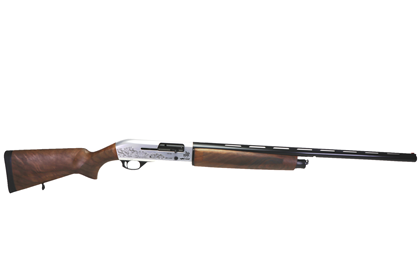
Modern long guns are rifles and shotguns. Although both are descendents of muskets, they have differences. The rifles usually have internal barrel ray, being able to print rotation movement to the projectile, which, due to the angular momentum, has a greater resistance to deviations of its trajectory, allowing greater accuracy at long distances. Rifles are long weapons that do not have this ray, and can therefore shoot projectiles of variable types and shapes, such as hundreds of small balls. They can also fire more than one cartridge at a time. Given the characteristics of their solid, aerodynamic projectiles, although they have greater accuracy and range, rifles provide a very small impact area.
Rifles, on the other hand, project loads that provide a larger impact area, but with considerably less range and accuracy. However, the larger impact area can compensate for the reduced accuracy as the shot spreads out during flight. Consequently rifles have their greatest employment in hunting, particularly against aerial targets. Rifles are commonly used for hunting or for property defense (home, farm, or workplace) where targets are at close range and certainty that the target is hit and immobilized is required.
Automatic Rifles
An automatic rifle is a firearm powered by an assembly similar to that of an automatic pistol, wielded by a single infantryman, with manual (repeating) or automatic firing capability. The Browning M1918 automatic rifle was the first American infantry weapon of this type and was generally used to provide fire support, a role now filled by light machine guns. Other early automatic rifles include the Fedorov Automat and the Huot automatic rifle. Later, German forces deployed the Sturmgewehr 44 during World War II. This design would become the basis of the assault rifle.
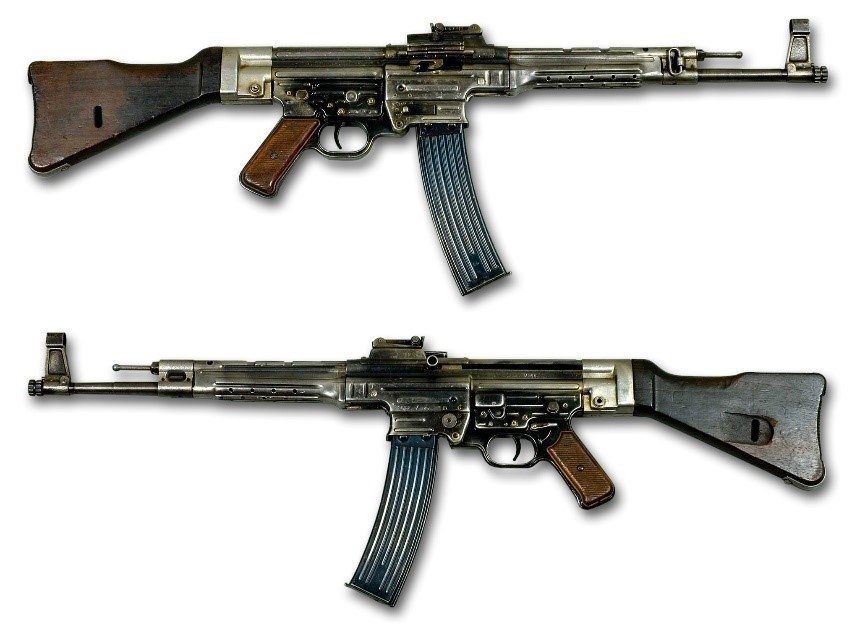
Battle Rifles

Battle rifles are another subtype of rifle, generally defined as selective fire rifles that use high-powered cartridges, examples of which include the NATO 7.62x51mm, Mauser 7.92x57mm and 7.62x54mmR. They are intended to serve similar purposes as assault rifles, as both are usually employed by ground infantry. However, some prefer battle rifles because of their more powerful cartridge, despite the powerful additional recoil. Some semi-automatic precision rifles are configured from battle rifles.
Assault Rifles
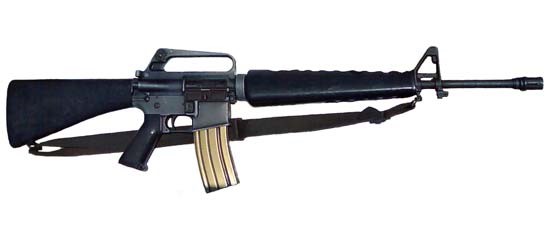
In World War II, Germany introduced the STG 44 and creating the class of firearms most widely adopted by the military, the assault rifle. An assault rifle is generally slightly smaller than an automatic rifle, such as the American M14. But the main differences that define an assault rifle are the ability to select a firing cadence and to employ smaller caliber ammunition than the old battle rifles, which employed high caliber, high powered ammunition.
Soviet engineer Mikhail Kalashnikov quickly adapted the German concept by employing a smaller cartridge, the 7.62×39mm, derived from the Russian standard 7.62×54mm battle rifle, to produce the AK-47. Soon after World War II, the Kalashnikov AK-47 automatic rifle, due to its lightness, extremely high operational reliability under adverse terrain and weather conditions, began to be employed as a standard armament by the military forces of the Soviet Union and its allies in the Eastern block of the Warsaw Pact, as well as by other nations in the Eastern hemisphere, such as China, North Korea, and North Vietnam. Given their low manufacturing cost, they were widely employed by guerrilla troops and liberation wars in Africa and the Middle East, becoming the most widely produced assault rifle on the planet.
Variants of the M16 and AK-47 are still widely used internationally today, although other models of automatic rifles have since been introduced. A smaller version of the M16A2, the M4 carbine, is widely used by US and NATO tank and armored vehicle crews. The Israeli-designed IMI Galil, based on the AK-47, is being used by military forces in Israel, Italy, Burma, the Philippines, Peru, and Colombia. Swiss Arms of Switzerland produces the SIG SG 550 assault rifle, also used by France, Chile, and Spain, among others. And Steyr Mannlicher produces the AUG, in use in Austria, Australia, New Zealand, Ireland, and Saudi Arabia, among other nations. Modern requirements demand compact weapons with no loss of firepower.
Precision Rifles
The definition of a precision rifle can vary from expert to expert. However, we can cite some typical characteristics of precision rifles used by marksmen. They generally have the capacity to operate with high-powered ammunition, semi-automatic operation, bolt operation, long range, and high accuracy. Their characteristics may vary depending on the job, and a precision rifle for police use may differ in specifications from a precision rifle for military use.
Police snipers generally do not hit targets at extreme distances, but rather targets at medium range, and can even be added to targets at close range, requiring this range flexibility. Police models usually require smaller size and greater portability. On the other hand, precision rifles for military use usually use higher-powered cartridges, capable of piercing armor or medium-thick protective structures.

They must also be able to reach targets at long range with maximum accuracy. In general, sniper units, the troop that employs precision rifles, were not more prominent until World War I, when the Germans demonstrated their usefulness on the battlefield.
Since then, they have become an important part of the warfare structure. Examples of precision rifles include the Accuracy International AWM, the Sako TRG-42, and the CheyTac M200. Cartridges used in precision rifles include the .338 Lapua Magnum, the .300 Winchester Magnum, and the .408 CheyTac.
Machine Guns
A machine gun is a long, fully automatic weapon, usually separated from other classes of automatic weapons by the use of belt-fed ammunition, although some models use drums, pans or buckets. Of caliber generally based on those of rifles, ranging from 5.56mm NATO for a light machine gun to 0.50 BMG for heavy models, embarked in vehicles or aircraft.
Although it only became widely used with the advent of World War I, the first machine guns were already being used by military forces in the second half of the 19th century. The U.S. arsenal during the 20th century included the M2 Browning .50 heavy machine gun, the M1919 Browning .30 medium machine gun, and the 7.62 × 51mm NATO M60 general purpose machine gun, the latter of which was used extensively during the Vietnam War
Machine guns of this type were originally defensive weapons, requiring a tripod and operated by at least two men, because of the difficulties in moving, positioning, and ammunition.
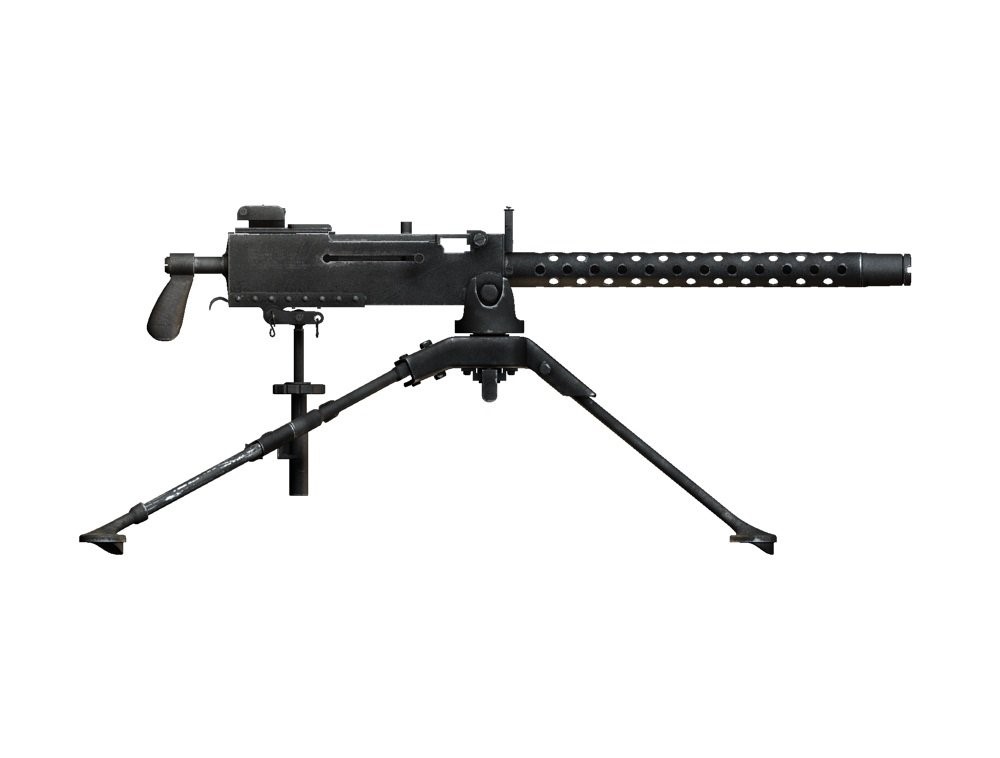
In contrast, modern light machine guns, such as the FN Minimi, are operated by one man and have large ammunition capacity and a high rate of fire. Light machine guns are usually employed on the move, during troop advances. Machine gun accuracy varies according to many factors, from design to manufacturing tolerances, most of which have been improved over time.
Sub-Machine Guns
A submachine gun is a small automatic firearm capable of firing ammunition normally used in automatic pistols, with a high rate of fire. Existing models include the Skorpion Vz 61, the MAC-10, and the Glock 18; the Israeli Uzi and Heckler & Koch MP5, which use the 9×19mm Parabellum cartridge; and the American Thompson submachine gun, which fires .45 ACP caliber ammunition.
Due to their small size and the limited penetration of the ammunition employed, compared to the high-powered machine gun ammunition, they are generally employed by military, paramilitary, and police forces to engage opponents at close range and in confined spaces.
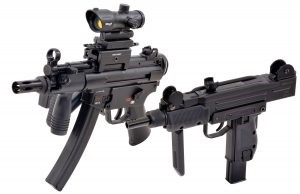
Airsoft
Airsoft, or Softair, is a tactical game where several players gather to participate in simulated military or police combat, using simulated weapons that shoot non-lethal plastic projectiles. It was created in Japan in the 1970s out of the need to create imitations of real weapons for collectors and the film industry.
As time went by, the practice of these simulated battles gained more interested parties and the sport and its equipment developed, and today it is practiced in practically all countries, and the "weapons" used are developed in such a way as to increasingly present more resources and more similarity to real firearms. The system used to launch the ammunition operates by means of pressurized gas, spring, or electric propulsion.
In Brazil, Airsoft began to be promoted in 2003, through the Portal Airsoft Brasil. After several meetings with the Controlled Products Inspection Board, Airsoft started to be recognized by the Controlled Products Inspection Board - the Brazilian government body that regulates controlled products in the country.
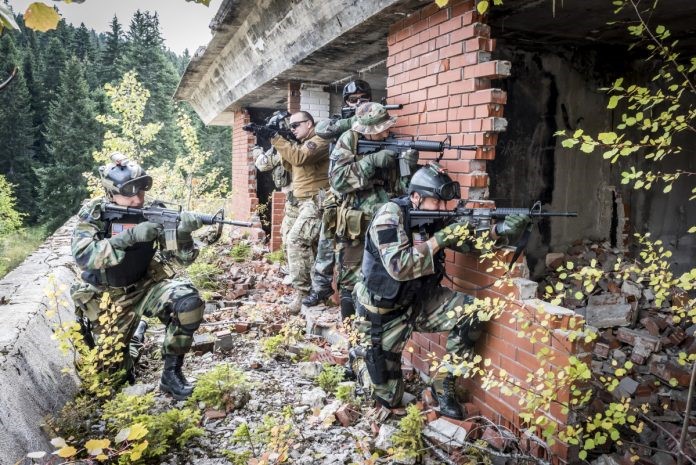
These meetings gave rise to drafts that resulted in the current edition of the ordinance that officially regulates the subject. Thus, in December 2007, Ordinance No. 006-D LOG was released, which regulates the use of equipment used in the practice of the Airsoft sport in Brazil. In February 2010, the Brazilian Army published Ordinance 002 CO-LOG, which revoked the previous ordinance and started to require that Airsoft pressure weapons have their extremities painted orange or bright red to differentiate them from real firearms, since the appearance of the latter is becoming more and more similar to that of real weapons. Thanks to the ordinance and to the appearance of national stores, the community of players is increasingly active and growing, and the sport has been more publicized, already counting thousands of players.
Technically, in Brazil, Airsoft weapons are classified by the Army as "pressure weapons", whether they are spring-loaded or gas-loaded. The acquisition of these weapons can be made by anyone over 18 years old in stores authorized by the Army. For gas weapons it is required, an additional registration of the buyer before the Army, called "CR" (certificate of registration). Therefore, in Brazil it is not correct to call Airsoft weapons simulacra or markers, since simulacra do not have shooting capability, and markers have no legal definition in law. On June 05, 2017, Ordinance No. 56 COLOG decrees the end of the requirement of CR for the acquisition of gas pressure weapons (GBB).
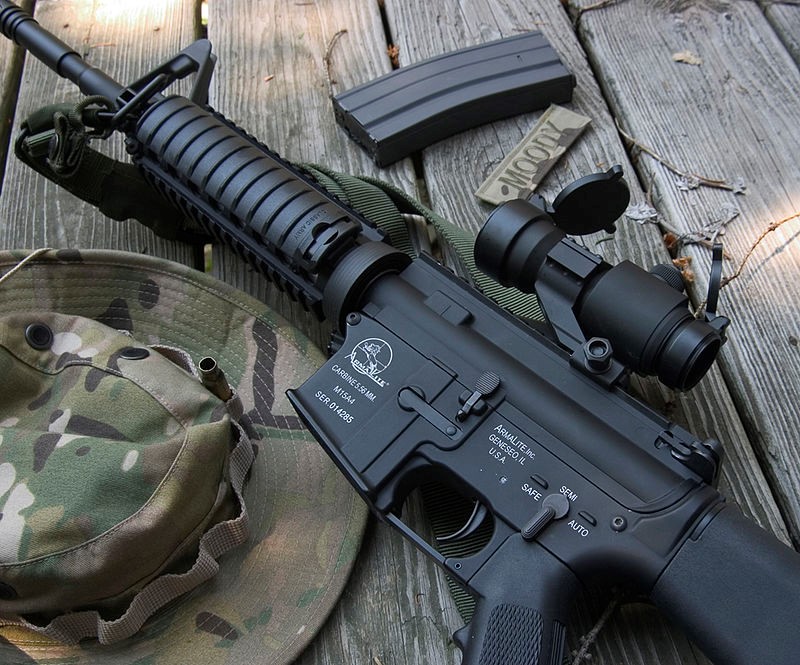
The community of players is very active and most groups require the player to present an invoice from a store duly authorized by the Army in order to play, thus inhibiting the smuggling and illegal importation of such weapons, a practice that has made possible the healthy development of the sport, with the presence in the country of several regularized stores for the sale of Airsoft guns, and supplies for players. In almost a decade of activities there has been no news of any serious accident involving players in Brazil, observing the mandatory recommendation to wear goggles. Some players prefer to use a mask to protect the whole face.
Paintball
Paintball is also a tactical game, similar to Airsoft, but using ammunition loaded with paint in order to mark the opponent who is hit. The weapons used, also called markers, use a cylinder of compressed gas (Nitrogen or CO2) to fire the ammunition. Paintball first appeared in the mid-1960s, when Charles Nelson created a kind of gun that fired paint pellets to be used by forest rangers to mark trees that were to be cut down. A few years later, the practice developed as a sport, and in the late 1980s it was brought to Brazil, gaining thousands of fans all over the country.
Most Paintball guns have a receptacle where the many cartridges are stored, which ends up giving them a strange appearance, distancing them, in terms of appearance, from real guns and even from Airsoft guns. The following accessories can be purchased and installed on Airsoft guns to achieve a greater reality: bezels, reddots, grips, flashlights. These accessories are not normally used on Paintball markers.
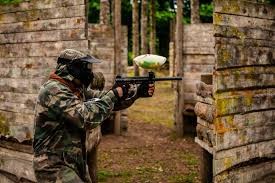
Both sports require players to wear personal protective equipment, especially for the head and face, usually helmets with plastic visors, with adequate resistance so as not to be damaged by the impact of the ammunition used.
In Airsoft, players usually wear military or police uniforms with various camouflage patterns (Woodland, MultiCam, ACU, A-TACS FG, A-TACS AU, MARPAT, Desert, Digital Urban, etc.). Paintball requires that the clothing, in addition to having camouflage patterns, be made of fabric that allows easy removal of paint by washing.
Airsoft missions or matches can last half a shift, a full day, or even longer. There are games that last longer than 72 hours, where players sleep in camps and have their meals in the "theater of operations," and which can be held in environments that simulate woods, open fields, or urban situations. The objective can be either to eliminate all the opposing players or for each team to take the opponent's flag and bring it to their camp. In this type of mission, both teams act offensively, in terms of searching for and taking the opposing flag, and defensively, in terms of protecting their own flag.
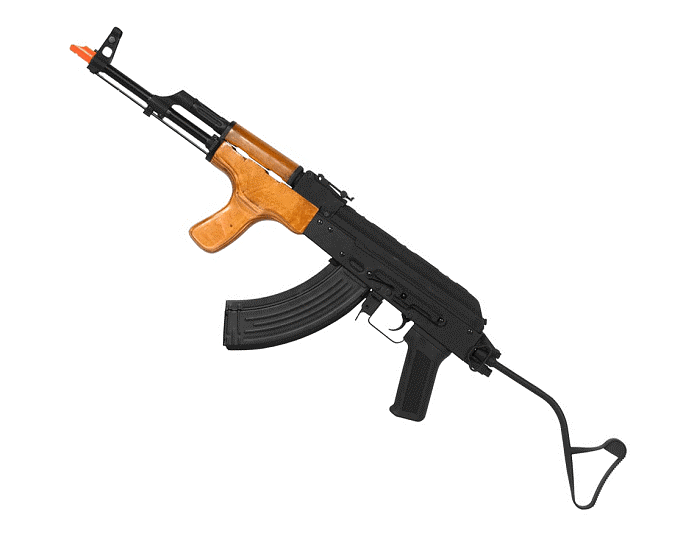
Insertion, ambush, ambush, and many other actions can be used, as if it were a real war, always respecting the physical and moral integrity of all participants. A player hit and killed can be brought back to life by a "doctor", or after a certain time, according to the established rules, and rejoin the game. MilSim, short for military simulation, is the most widely used form of play in Airsoft. The players' sides are chosen by uniform or identified by tape.
The matches are based on a created story or on events that have already occurred in world history. These matches can have over 100 players and last several days and nights and include doctors, chemists, villagers, mercenaries, bandits, terrorists, hostages, and many other categories that will depend only on the imagination of the creators of the operation.
Both Airsoft and Paintball are modalities approved and regulated by the Public Safety Commission of the House of Representatives and inspected by the Brazilian Army. To acquire electric or spring-loaded launching equipment, the buyer must be over 18 years old. It is necessary to keep the tip of each replica painted red or bright orange and always carry them accompanied by the purchase invoice.
Airsoft Weapons - These weapons are usually built in 1:1 scale or, eventually, ¾ scale for the mini models. Among the materials used for their manufacture are metal, plastic (ABS) and wood.
. The projectiles can be of 6 or 8mm caliber, weighing between 120 and 600 milligrams. In Brazil, the caliber of Airsoft weapons is limited to 6mm, as determined by the Brazilian Army.
The weapon's propulsion can be through springs, electric mechanisms (AEG) or compressed gas (GBB), including propane or "green gas", CO2 capsules, compressed air, HFC134 refrigerant gas. Some guns can run on HPA (High Pressure Air) like some Paintball guns. Firing speed typically ranges from 200 to 600fps (feet per second). Shooting at this speed can be felt by players, but does not cause injury.
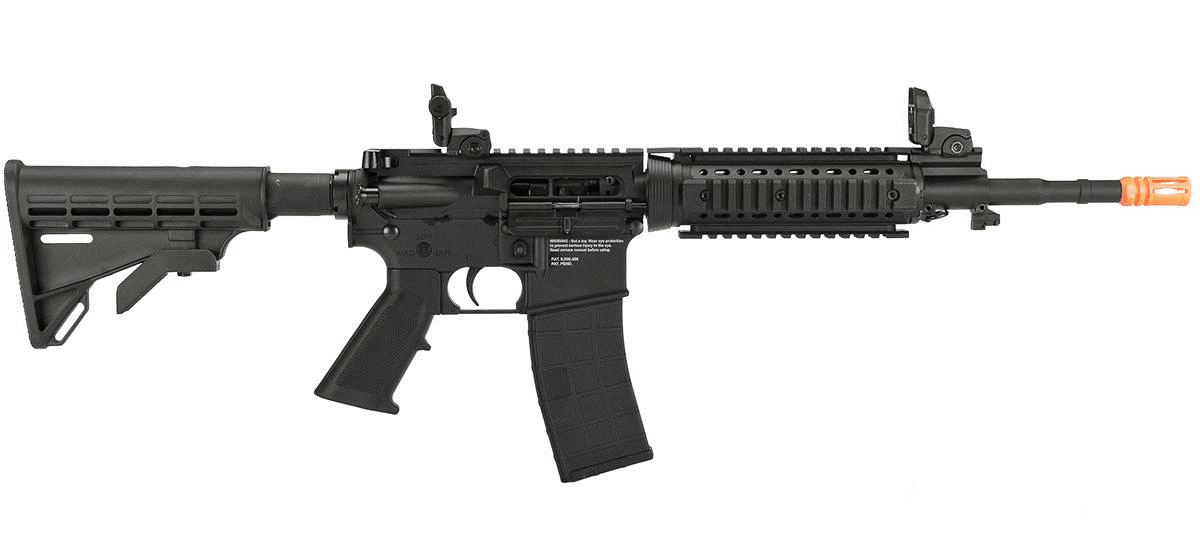
The pain is equivalent to a "pinch", typically less than other sports, such as the also popular paintball. The plastic balls have no paint inside, and scoring is based on the honor system, with each player being responsible for charging when hit.
Shooting Accessories
In addition to the presented weapons, QUARTZO offers in its portfolio several accessories for shooting practice, such as ballistic barriers to be positioned at the back of the shooting stand, accessories and equipment for shooting sports, fixed, folding and moving targets, disc throwers, safes approved for storage of firearms, and other items for shooting practice.
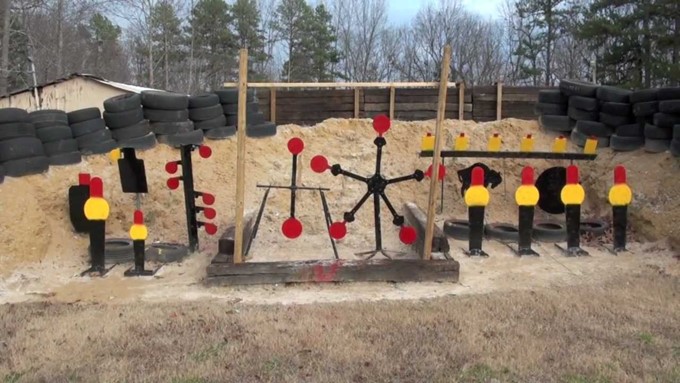
QUARTZO Defense Engineering is establishing partnership with representatives of the largest, best and most renowned manufacturers of firearms and training in Brazil and abroad. With this, we seek to start acting in this segment in order to meet the needs of our operational customers. Soon, our portfolio will be presented. Until then, contact us and let us know your needs so that we can develop a customized and immediate solution.
